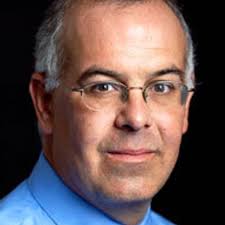When we write, starting with an outline is almost impossible.
That’s the case I make in Write Better (chapter 3, if you are interested). First comes observing, thinking, questioning, reading, researching, discussing, jotting notes, and maybe drafting paragraphs. Somewhere in the middle we start organizing our ideas.
New York Times columnist David Brooks describes how he does exactly this.
 I am always collecting strings on about seven or eight columns. I’ve got piles of paper for gun control, immigration – whatever the issue of the day is – and then some intellectual things or cultural things. I’m collecting that string and I have a column due every three and a half days. . . . Based on what happens on the day before it’s due or the day it’s due, I’ll decide “Okay, I’m gonna do this one.” I have all this paper, documentation, notes I’ve taken from interviews, and I think geographically.
I am always collecting strings on about seven or eight columns. I’ve got piles of paper for gun control, immigration – whatever the issue of the day is – and then some intellectual things or cultural things. I’m collecting that string and I have a column due every three and a half days. . . . Based on what happens on the day before it’s due or the day it’s due, I’ll decide “Okay, I’m gonna do this one.” I have all this paper, documentation, notes I’ve taken from interviews, and I think geographically.- I lay it out on the floor of my office in piles of paper. Every pile is a paragraph. I pick up a pile. Write that paragraph. Throw that pile of paper in the garbage. And then repeat for all the piles. By the time I start writing, the column is already 80 percent done. It’s the organizing of the piles that’s the key process.
That’s how I wrote Write Better. My research and doodling consisted of forty years of editing and speaking about writing, and twelve years of blogging about writing and editing. Those were my rough notes and research. Then I took those “piles” of material and started sorting.
 I initially had at thirty or forty groups which I consolidated into about twenty. As I did so, I noticed they fell into four large categories—the craft, the art, and the spirituality of writing plus practical things writers need to know about publishing.
I initially had at thirty or forty groups which I consolidated into about twenty. As I did so, I noticed they fell into four large categories—the craft, the art, and the spirituality of writing plus practical things writers need to know about publishing.
When I started seriously drafting the book, I continued to rework the arrangement of chapters. Then I got input from a dozen readers on my full draft who gave many suggestions for more reorganization. Once more I shifted chapters around.
Order and structure are essential in helping readers understand what we have to communicate. As I say in Write Better, we shouldn’t try to start with an outline. But we had better end with one.
—
paper image credit: Pixabay myrfa
